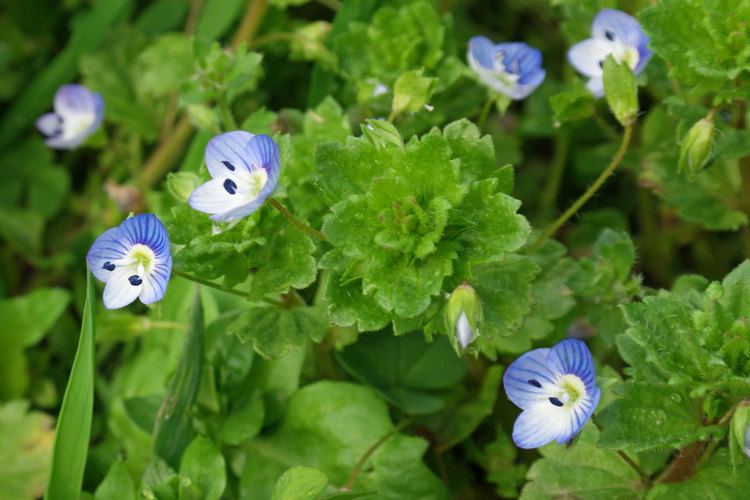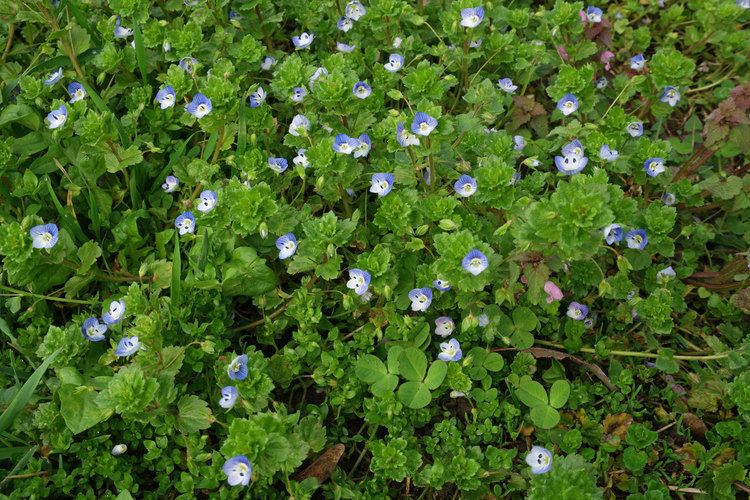Rank Species | Genus Veronica Higher classification Speedwell | |
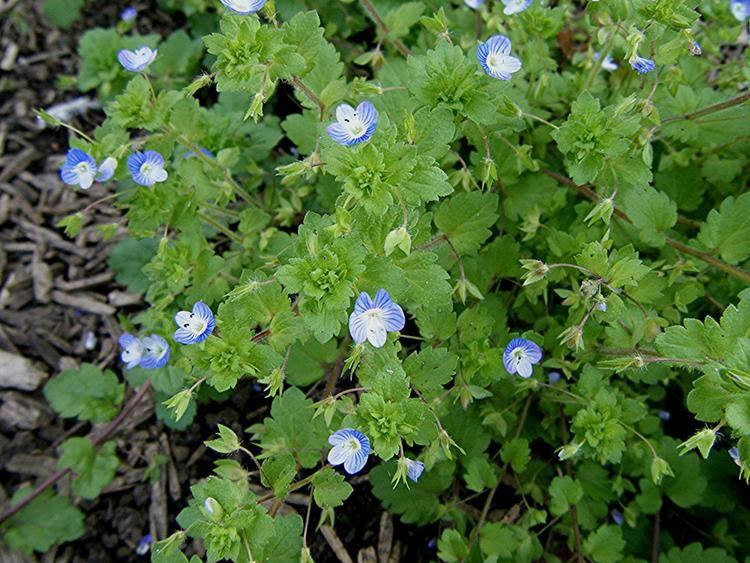 | ||
Similar Speedwell, Veronica polita, Veronica arvensis, Veronica hederifolia, Purple Deadnettle | ||
Veronica persica (common names: birdeye speedwell, common field-speedwell, Persian speedwell, large field speedwell, bird's-eye, or winter speedwell) (Persian: سیزاب ایرانی) is a flowering plant in the plantain family Plantaginaceae. It is native to Eurasia and is widespread as an introduced species in the British Isles (where it was first recorded in 1825), North America, and eastern Asia, including Japan and Taiwan.
Contents
- Mynature apps identifying birdseye speedwell veronica persica
- Description
- Horticultural uses
- References
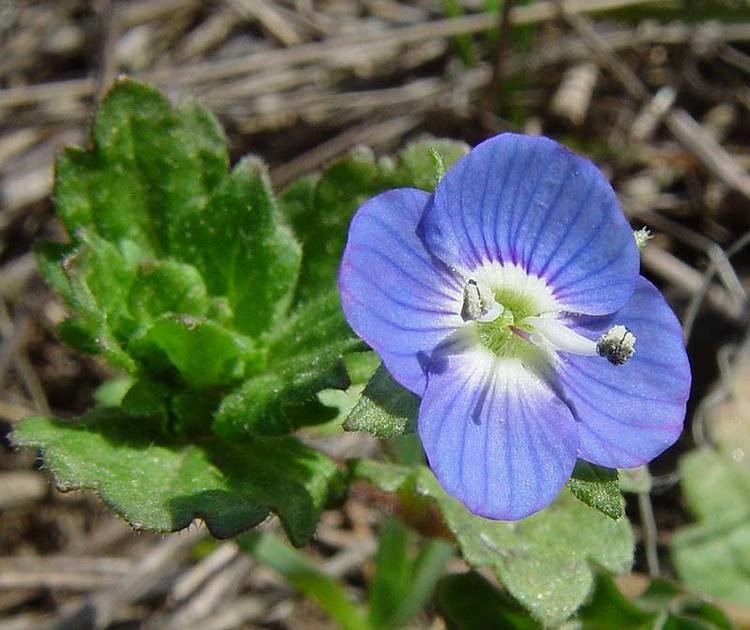
Mynature apps identifying birdseye speedwell veronica persica
Description
V. persica is an annual or winter annual herb that reproduces from seed.
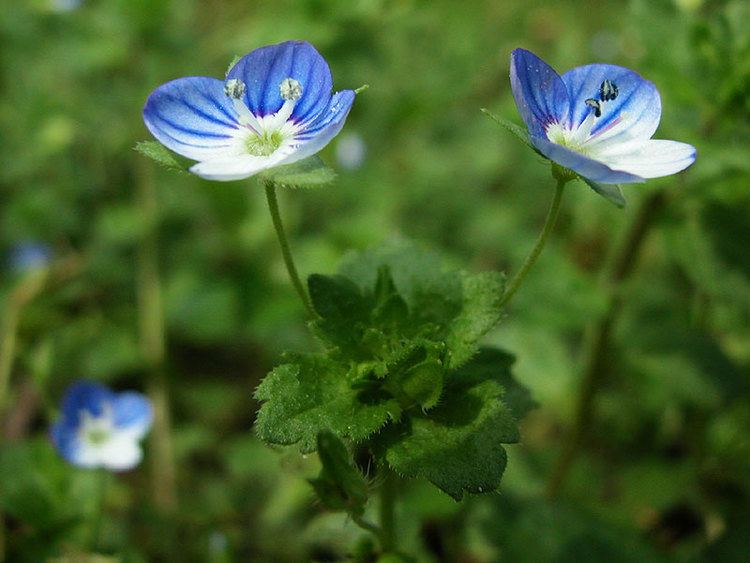
Its cotyledons are triangular with truncated bases. The short-stalked leaves are broadly ovate with coarsely serrated margins, and measure one to two centimetres (0.4 to 0.8 in) long. The leaves are paired on the lower stem and are alternately arranged on the upper parts. The plant has weak stems that form a dense, prostrate groundcover. The tips of stems often grow upright.

The flowers are roughly one centimetre (0.4 in) wide and are sky-blue with dark stripes and white centers. They are zygomorphic, having only one vertical plane of symmetry. They are solitary on long, slender, hairy stalks in the leaf axils.
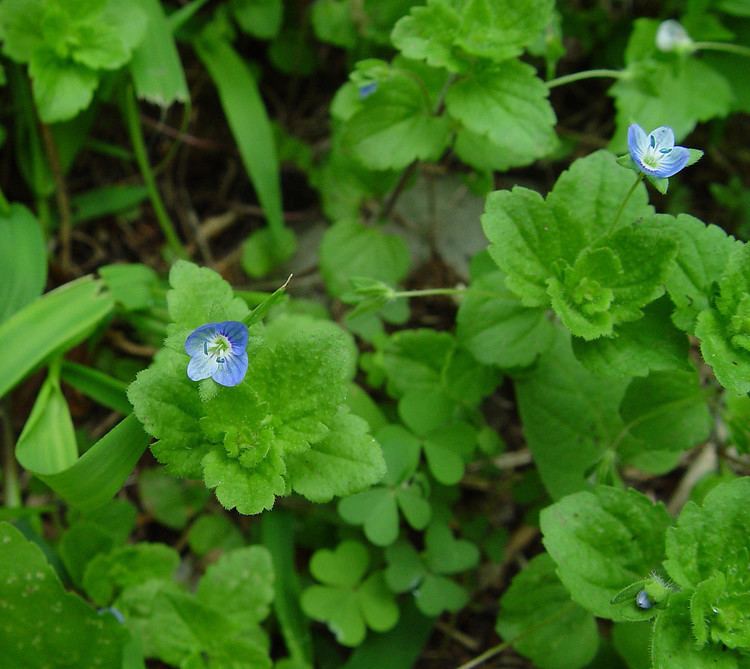
The seeds are transversely rugose and measure between one and two millimetres (0.04 and 0.08 in) long. There are five to 10 seeds per locule in the fruit.
V. persica can be distinguished from similar species by its heart-shaped fruit with two widely-separated lobes.
Horticultural uses
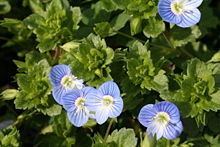
Although many species in the genus are used in gardens (such as V. exalta, V. incana, V. gentianoides, V. longifolia, V. perfoliata, and V. spicata), this species is generally seen as a weed and has no known horticultural uses.

